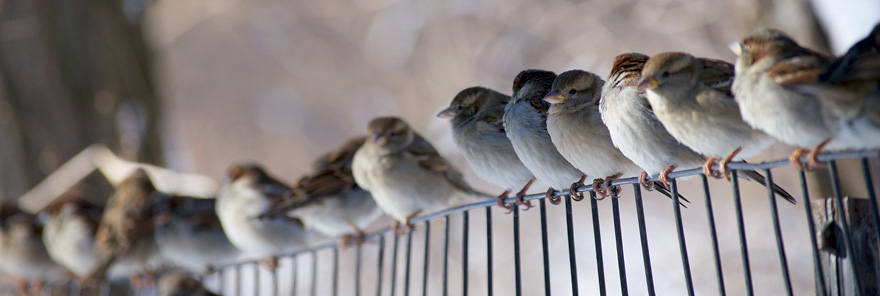Does your horse share space with birds? Barn swallows and other species of birds frequently set up shop in stables, especially those with high, lofty rafters and doors. While birds can keep down on insect populations around your farm, once they decide to move in, they’re not particularly good neighbors. Birds can spread salmonella, damage equipment, and even spark fires while they’re busily building nests and starting families in your barn. We have some tips on how to decide on the best way to get birds out of your barn.
Determine what kind of birds are living in your barn. While most of the time, you’ll be dealing with common bird species such as sparrows, barn swallows, or pigeons, there are some protected species out there which can’t be harmed. Additionally, most birds are protected by local or federal regulation, especially when nesting. If you were planning on using hunting as a deterrent, you may need a special permit to legally do so. This resource from Penn State includes a descriptive list of common bird species who often inhabit barns.
Move them out as soon as they move in. Since you don’t want to disturb a nesting bird or kill the young, dismantle nests as soon as you see them begin to take shape. If you see birds frequently flying in and out of your barn with mouthfuls of string, twigs, or horsehair, it’s time to follow their flight and see just where they’re going. You might find yourself on a ladder with a broom-handle to take apart the nests being built in your rafters.
Install deterrents. You can deter birds from entering your barn by blocking their favorite entrances. Plastic strips can be hung in the doorway to dissuade them, while still letting in plenty of daylight. Areas where birds like to congregate and roost can be made very uncomfortable with spikes, or we really like Penn State’s recommendation to build catwalks along rafters and ledges, as patrolling cats discourage birds from landing.
Birds can also squeeze through very small places, so installing mesh into ventilation gaps and any holes in your walls or under the eaves is recommended.
You might also take steps to frighten birds away. Plastic owls seem to have been around for so long, most birds don’t mind them anymore, but some barn owners report good results from tying old CDs to fishing line and hanging them over barn entrances. The shiny reflections of the spinning CDs seems to startle birds away.
Keep in mind that some birds are naturally capable of finding ways around deterrents. Starlings and pigeons have adapted happily to live in urban centers despite expensive efforts by the human residents to evict them from the city limits. If you use spikes, you’ll find you’ll need to cover every last inch of a ledge to deter a starling for very long. House sparrows are tiny and can fit through holes as small as three quarters of an inch wide, so you’ll have to be vigilant in finding and blocking holes.
Make your barn less attractive to birds. Since birds are so good at getting around your deterrents, you’ll also want to embark on a bird-prevention plan that starts with, you guessed it, cleanliness. Just like with a rodent population, the birds wouldn’t have shown up if your barn didn’t have plenty for them to eat. Keep your grain and feed in tightly-closed containers and clean up spills meticulously. Since we’ve all seen birds tearing apart the manure pile, we know they love grain no matter where it’s been, so keeping the area around your barn manure-free will help keep the birds in your paddocks and out of your stables. If you have a serious problem, you might want to consider changing from sweet feed to pellets.
Do you have birds in your barn? Have you experienced any problems with birds in the past? We’d love to hear more about your experiences in the comments!


